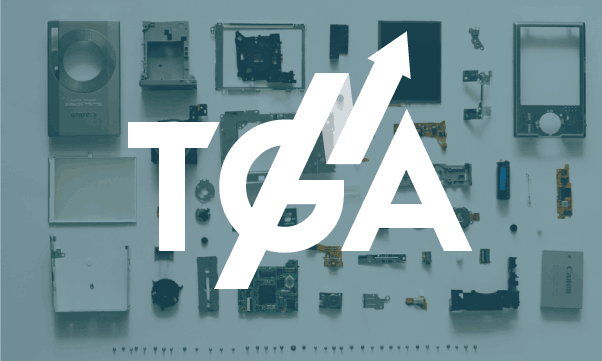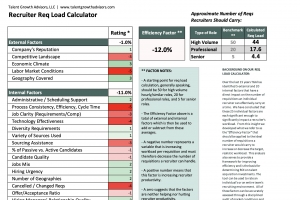Talent Acquisition Technology Isn’t Going to Fix Your Hiring Problems

If someone unfamiliar with the talent acquisition industry took a close look at the current landscape, the most obvious conclusion would be that TA technology is the principle driver of positive hiring outcomes. After all, TA tech dominates the field by way of long term industry players, start-ups, conferences, consulting firms, blogs and research studies. Even RPO and staffing firms tout their technology as a competitive advantage. And for good reason: according to one study, in 2023 nearly $9B will be invested in HR technologies - most related to hiring and retention.
Yet, attracting and retaining skilled employees ranks among the top three concerns of senior business leaders according to recent studies by consulting firms and think tanks. By all accounts, hiring isn’t working well within many companies. Incessant frustration with any or all of the following can be heard in most organizations: the speed with which interested and qualified candidates are identified, recruiters’ ability to compel top talent to consider opportunities, the quality of candidates presented to hiring managers, the ability to rapidly drive new hires’ productivity, the cost of talent acquisition efforts . . .
As the noise increases, many HR and TA leaders turn to that which seems to be the most obvious solution: talent acquisition technology. And there’s something for everyone! In fact, there are dozens (hundreds?) of somethings for everyone: technologies for applicant tracking, employee referral, job search, brand creation, job marketing, resume builders, job board distributors, social networks, job search, CRM, mobile apply, resume parsing, job matching, interview scheduling, video interview, skills and fit assessments, candidate referral, Chat / AI, predictive analytics, metrics management, VMS, temp labor management, and so on and so on.
Despite the explosive growth of talent acquisition technologies - and the vast number of problems they claim to solve - hiring isn’t getting better, faster or cheaper. Why?
1. It’s a distraction.
If you were to conduct an audit of the current state of recruiting in your organization - and a root cause analysis of the most critical problems - a missing technology will never appear at the end of the problem tunnel. Let’s face it - the most important talent acquisition activities happen outside of any technology: understanding the spec of the role and the business it will serve, identifying the right prospects to target, crafting compelling, authentic messages, reaching out in a personal and customized way, talking to candidates, convincing them to consider the job and the company, screening, selection, influencing through the offer process, etc.
These activities require skilled recruiters with business acumen, talent acquisition functional expertise, the ability to innovate and drive results, good judgment, excellent communication skills, ability to create rapport quickly, etc.
Technology will certainly help track, report on and continuously improve such activities - but will never take the place of these essential skills.
2. It takes a long time....
Making the decision to acquire technology is just one step in a very long process. Consider what’s involved: influencing key stakeholders, budgeting, a request for proposal process, vendor selection, contracting, configuration, testing, implementation, training, etc. - the timeframe is often measured in years vs. months.
HR leaders understand that such efforts are all consuming - and intuitively often suspect that something more is missing - not to mention it may take years until actual results can be captured and assessed. A cynical view of such efforts may lead one to believe that going for it is the perfect distraction: “We need to wait for the technology to be implemented for things to improve."
3. ...And then, it doesn't usually work.
If your technology isn’t configured to support a specific and detailed desired state process (which in turn proceeds from an over-arching TA strategy) - it simply can’t be right. The most advanced, perfect technology - laid on top of a nebulous or absent process in which roles and responsibilities aren’t defined or desired outcomes clear - simply can’t work. Plus, once you get into the thick of implementation planning, you’ll find that it doesn’t integrate well (or at all) with other systems, or there aren’t enough workflows or the configuration options are limited or your managers push back because they don’t want to use it or, well, you get the point.
4. It’s too good to be true.
C’mon - it’s just not going to work that way. As much as we all want to believe it. Companies - especially those powered by intellectual capital and dependent on quality hires - simply can’t avoid the hard work involved with attracting, selecting and retaining talent - no matter how many technologies it cobbles together. The war for scarce talent is getting harder and harder and the solution is not as sexy or slick or as easy as we wish it was.
Of course there are great talent acquisition technologies out there - and there is a time and place for them. The place is at an organization with a defined talent acquisition strategy and detailed process design, the road map that defines the work needed to win top talent. The role of technology is to support that vision and enable that work.
-----
Let's connect if you know you can get more from your talent acquisition technology. It's what we do.
Share this Article
Learn more about our unique approach to Talent Strategy Formulation.



